Get yours here.

Lonoke, Arkansas – September 21, 2021 – Remington has announced a licensing partnership with Smokey Mountain Knife Works (SMKW) to develop and distribute the 2021 Remington Bullet Knife, “Prospector”. Originally introduced in 1922, the Remington Bullet Knife series is widely known and sought after by Remington fans, knife enthusiasts and collectors alike.
“This knife has it all: nostalgia, functionality and quality,” said Danny Evans, Remington’s Director of Licensed Products. “SMKW has a longstanding relationship with Remington in licensed products. It was a natural fit to build on our partnership with SMKW and their long tradition with the Bullet Knife series.”
In 2021 Remington Ammunition continues to define a new era for such a heralded brand and the Remington Bullet Knife is another example of just how far Big Green has come. This Remington “Prospector” Bullet Knife is hand-crafted and finished to the highest quality standards by trained craftsmen. Remington Bullet Knives have been among the most collected knives of all time, and this knife both continues that long tradition and ushers in a new level of quality and craftsmanship delivered by SMKW.
“The most important fact about the Bullet Knife is that it has always been USA made,” said SMKW Founder Kevin Pipes. “We partner with the finest knife craftsman in the country to produce our knives, including Great Eastern Cutlery who is making this year’s Bullet Knife. The overwhelmingly positive comments attest to the knife’s quality and collectability. You can’t go wrong making an investment in “The Prospector.”
Remington is always seeking quality partners to represent the Remington lifestyle in new product categories. Please contact Danny Evans at danny.evans@remington.com with inquiries.
To be the first to hear about product availability, exciting new products and everything Remington ammo, visitors to www.remington.com are encouraged to sign up for Remington’s e-newsletter or follow Remington on social media.
For immediate release – Modi’in, Israel. – F.A.B. Defense® is pleased to announce the collapsible Rapid Adjustment Precision Stock (RAPS-C) to the lineup of AR-15 style rifle stocks. The RAPS-C is in full production and is now available to dealers world wide.
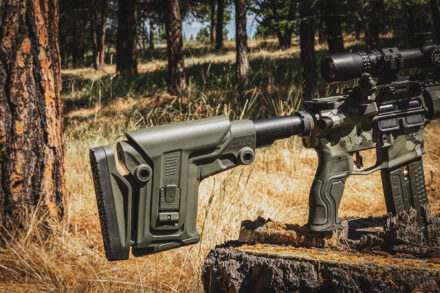
The RAPS-C is designed for the precision minded shooter who wants a full featured adjustable precision rifle stock with carbine functionality. The RAPS-C was designed in a response to customer feedback that in turn gives added functionality to the already popular fixed rifle length RAPS stock. Shooters who prefer compact precision rifles will now enjoy an integrated cheek rest and adjustable length of pull (LOP) in a traditional carbine style collapsible stock.
Specifications:
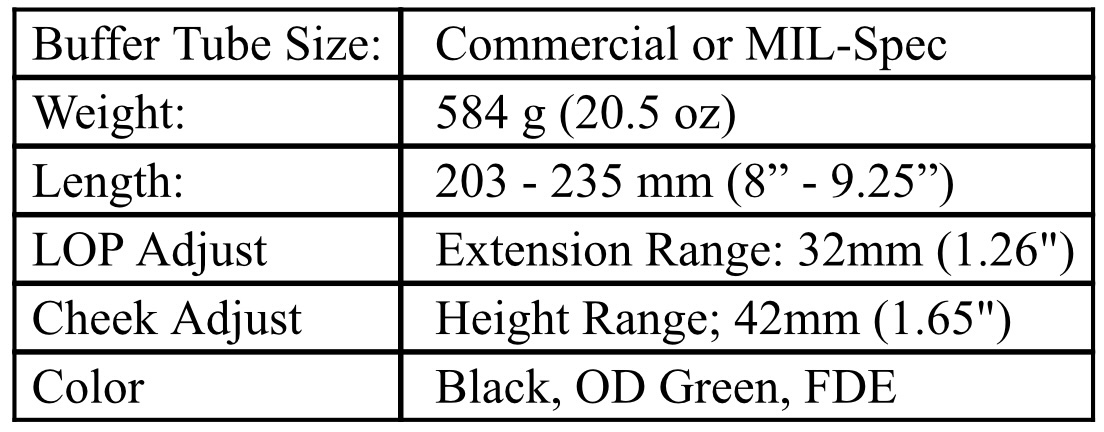
For more information please visit: www.fab-defense.com
JOINT BASE SAN ANTONIO-RANDOLPH, Texas — Several Air Education and Training Command initiatives to remove barriers for qualified candidates in the pilot candidate selection process were highlighted in the Air Force’s six-month assessment of its initial Racial Disparity Report Sept. 9.

Pilot Candidates may now:
– Use their highest composite scores from any Air Force Officer Qualifying Test (AFOQT) rather than the most current score.
– Complete the Test of Basic Aviation Skills (TBAS) up to three times, with the third requiring a waiver from the applicant’s wing commander or equivalent.
– Re-take the AFOQT and TBAS after 90 days compared to the previous 150-day requirement for the AFOQT and 180 days for the TBAS.
– Participate in study sessions with other individuals who have not yet taken the test if the examinee has also never taken the AFOQT.
These changes came after extensive research conducted by the pilot selection process working group responsible for identifying potential barriers while upholding the standards of excellence in the Pilot Candidate Selection Method (PCSM) used since 1993.
“Our studies concluded that these changes will result in more qualified candidates of underrepresented groups being selected for training,” said Lt. Col. Brandi King, the working group’s Air Education and Training Command lead.
Prior flying experience a barrier to qualification
Prior flying experience, the second largest component of an applicant’s PCSM score, particularly poses a socioeconomic barrier to candidates without access to or financial means to pay for flying lessons. To address this barrier, the Air Force now considers only a candidate’s initial 60 flight hours when scoring a candidate.
“There is no evidence that more than 61 hours of flight experience poses a significant benefit to pilot training success,” said Dr. Katie Gunther, chief of strategic research and assessment at the Air Force Personnel Center. “The probability of success in flight training increases substantially from 0 hours to 60 hours, then relatively plateaus.”
The working group also found that removing the higher ranges of flight hours as part of the PCSM score would result in a more-diverse applicant pool. According to the Validation of the Pilot Candidate Selection Method 2020 report prepared by the AFPC Strategic Research and Assessment branch, removing the four highest ranges of flight hour codes would have resulted in 69 more Hispanic, 47 more female, and 26 more Black/African-American qualified applicants over a 12-year period.
“Flying lessons are expensive and could potentially exclude qualified candidates from becoming pilots in the Air Force due to limited income or lack of opportunities,” said Brig. Gen. Brenda Cartier, AETC’s Director of Operations and Communications and the pilot selection process working group’s overall lead. “In order to ensure we do not eliminate otherwise qualified candidates, flight programs have been implemented at both The United States Air Force Academy and the Air Force Reserve Officer Training Corps. Cadets receive free ground and flight training, and an opportunity to gain critical skills and directly improve their competiveness for pilot selection boards.”
Pilot selection process
A PCSM score quantifies a pilot candidate’s predicted aptitude for success at undergraduate pilot training. This score is comprised of the AFOQT and TBAS scores, previous flying experience, and other “whole-person concept” merits such as grade point average, physical fitness assessment scores and class ranking.
“Data supports that the PCSM is the best single predictor of pilot training completion. However, it is imperative that we continue re-evaluating our selection methods and remove barriers that hinder rated diversity without compromising test integrity or lowering standards,” King said.
FOR IMMEDIATE RELEASE:
REDARC Defence Systems is proud to announce a new lineup of products specifically designed for military and emergency service vehicle applications. REDARC offers a blend of commercial off-the-shelf, modified off-the-shelf and build-to-print electronic solutions that improve the capability, safety and flexibility of a variety of defense vehicles and applications.
BCDC1225C & 1240C In-Vehicle Chargers
Our newest in-vehicle battery chargers are built to withstand austere environments while providing greater ease of installation. Available in 25A and 40A configurations, the BCDC1225C and 1240C are designed with consideration for all applications from automotive OEM to Emergency Services and Defense vehicle platforms. Designed to charge from DC to DC, applications include dual battery configurations, banks of batteries that need charging while in use, or while parked, and charging via solar panel connection. New features of these units include; improved thermal efficiency, mil standard connectors, filter board to improve electromagnetic performance, as well as options for IP sealing the unit. The new BCDC chargers have both 12V and 24V capability good for standard and variable voltage/smart alternators.
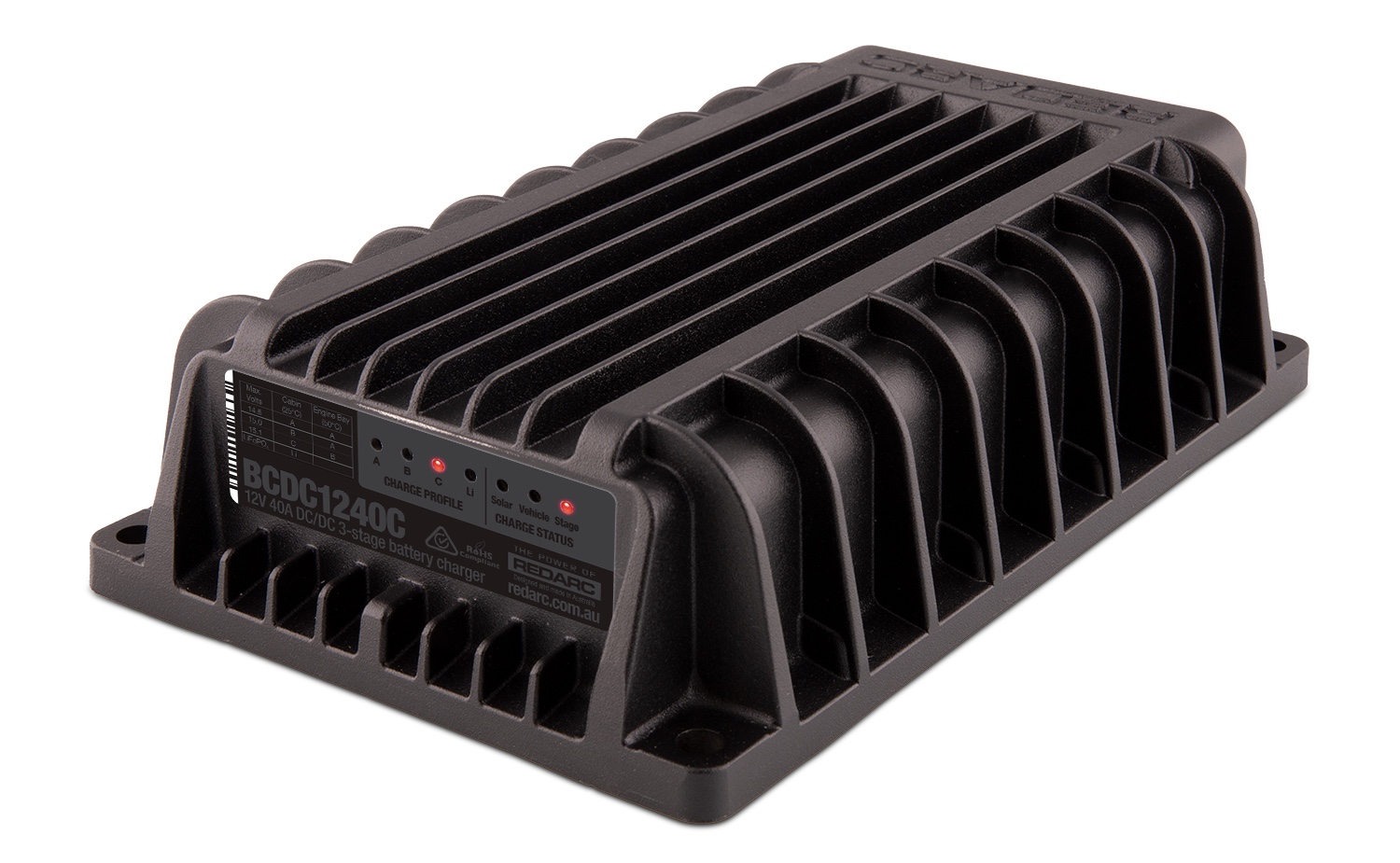
DPS242C Power Supply
DPS units provide constant, regulated power for all types of loads making them ideal as an alternative to installing an auxiliary battery; they also protect against reverse polarity, spikes or surges, short circuit, overload and over temperature.
The DPS 2420C (Connectorized) is designed for applications that require specific installation and operational requirements such as automotive OEMs, emergency services and defense.
The engineered enclosure is designed to house new low-noise DPS hardware, improving EMC/EMI performance to meet the demanding OEM testing levels and minimize interference to sensitive equipment. Perhaps the most important addition are the military grade, sealable connectors, replacing the flying leads on the after-market product. These provide a durable, environment protected product with a simpler installation and loom design. The DPS2420C can output one of three selectable output voltages (24, 27.4 and 29 volts) to suit the specific requirements of any load.
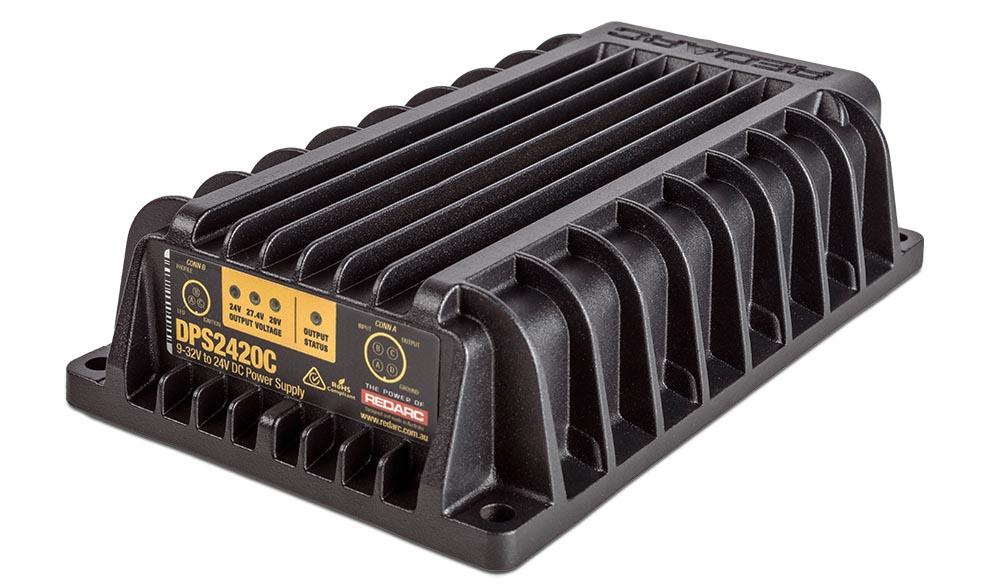
Inclinometers
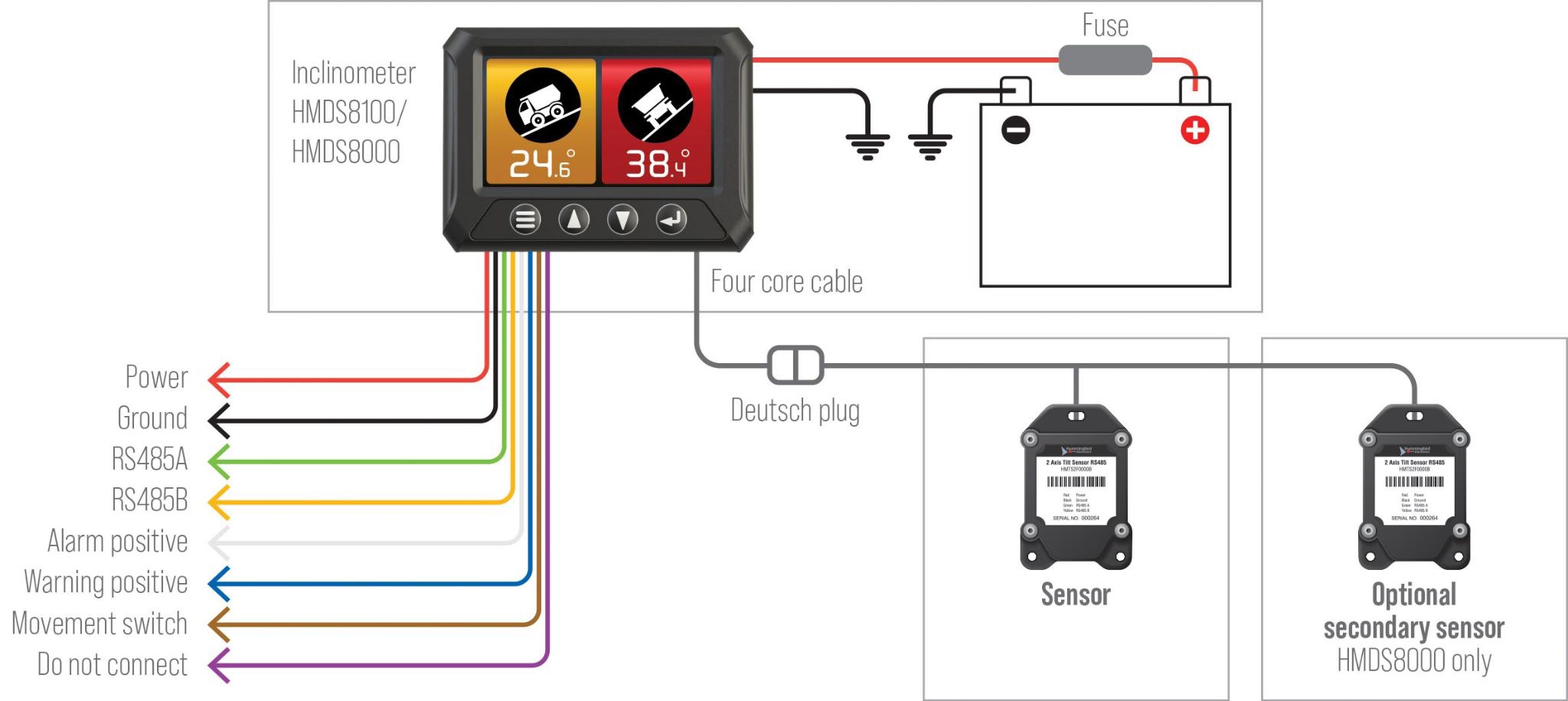
REDARC Defence Systems will now be offering a range of stability monitoring devices from Hummingbird Electronics. These combinations of inclinometers and tilt sensors ensure that you will know where your load stands whether you are static, or operating at speed. With a range of six types of display modules, you are ensured to find the right fit for your specific vehicle/fleet to ensure costly losses of equipment, time, and resources are avoided. Paired with high precision tilt sensors and switches, operators are able to monitor and manage the pitch and roll of their vehicle directly from the driver seat, ensuring safety for everyone near your large equipment.
About REDARC
Born in Australia, REDARC has over 40 years of experience in the research, design and advanced manufacturing of power and safety solutions for 4x4s, RVs, and trailers. We make the most rugged, reliable, and innovative voltage converters, power supplies, battery chargers, 12/24V management systems and trailer braking products on the market. Our technology is trusted by many in the automotive aftermarket, RVing, industrial, and defense sectors, and we strive to set ourselves as a benchmark for product and customer service quality in our industry. redarcelectronics.com/defense
PRESS & SALES CONTACT: aafes@redarcelectronics.com
Australia’s DefendTex has introduced the Drone-155, a drone launched from a custom 155mm tube which, once aloft, deploys four propellers to loiter over targets.
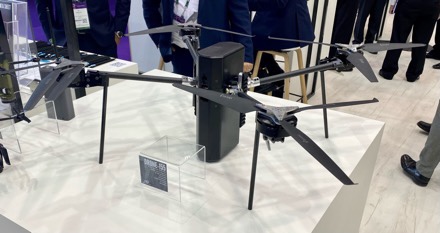
Featuring a GPS autopilot, it offers up to 120 minutes of flight time with a top speed of 40 m/s. The max payload is 20 kg. It can be fitted with ISR, EW, Kinetic, RPG40 multiple launcher, laser designator or smoke/flash payloads. It can also be used to deploy the? DRONE40 described below.
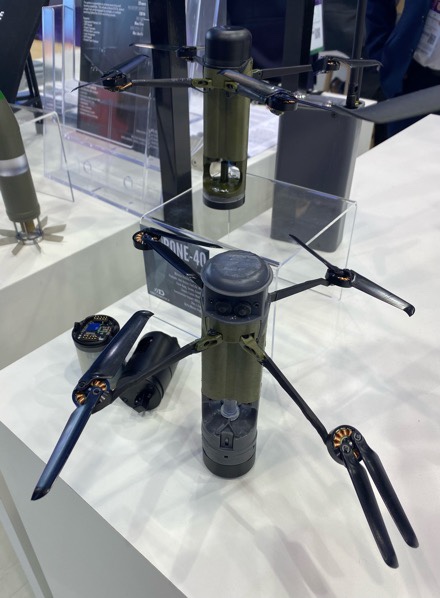
The Drone-40 is normally launched from 40mm Grenade Launchers and can stay aloft for up to 60 minutes, featuring a top speed of 20 m/s. Current payloads include ISR, HE Frag, Fuel-Air, Anti-Armor, Flashbang, Smoke, and C-UAS.
The Jankel FOXTUV shown is the FOX-X variant which is based on the Toyota Hilux (LC79). This model is also an experimental electric vehicle and you can see the large battery under the hood.

The FOXUTV is in service with several
armies, outfitted with either MOGAS or Diesel engines.
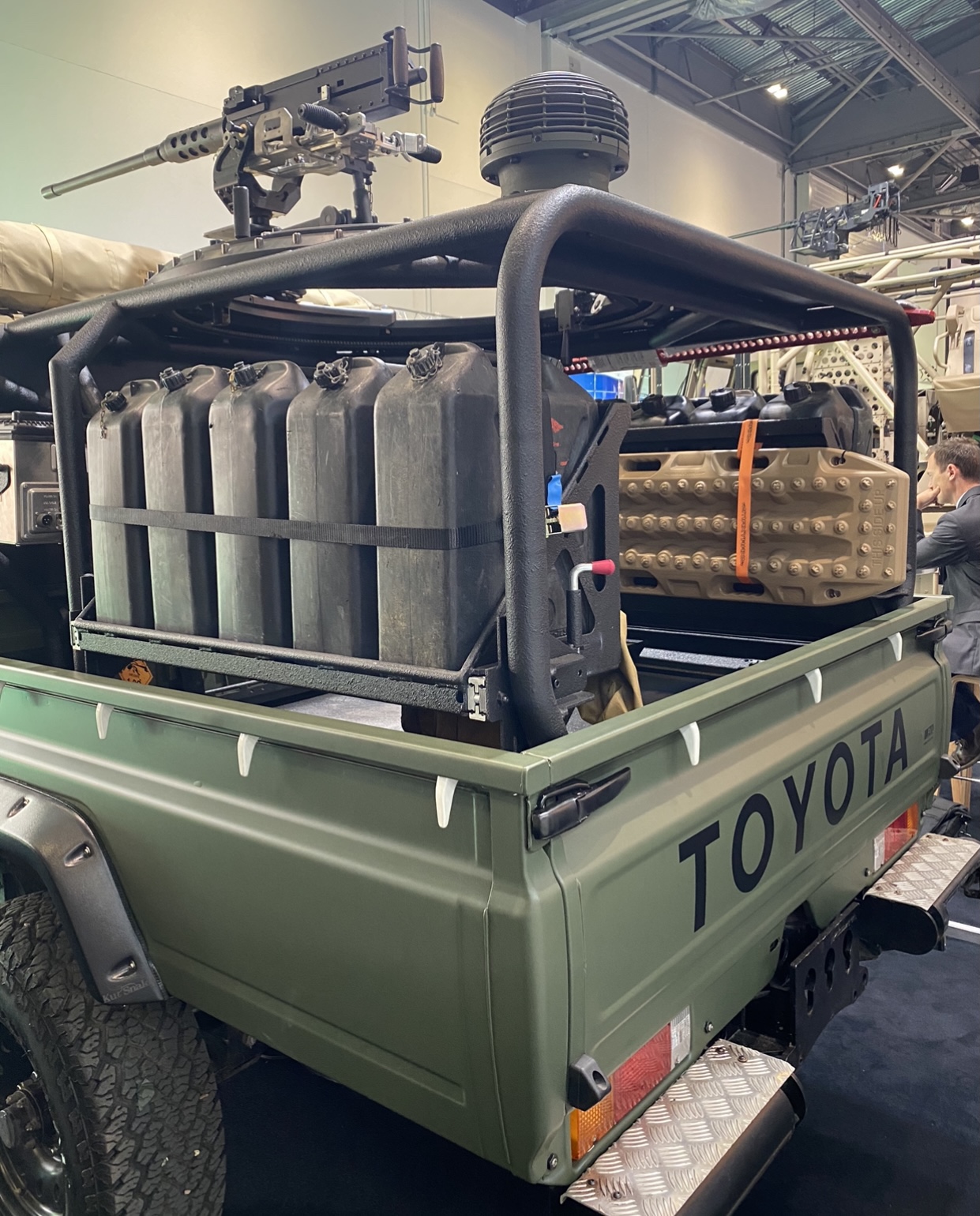
Basic Vehicle Stats:
• Approach Angle: 35° – 45°
• Ground Clearance: 10.2in
• Departure Angle: 28°- 32°
• Water Fording: 27.5in
• Breakover angle: 150°
• Step climb: 11.8in
• Fuel Capacity: 47 gallons
(71 gallon optional)
• Range: (typical) 932mi
In addition to the 4×4 model, Jankel also offers a 6×6 variant.
www.jankelts.com/fox-tactical-utility-vehicle-tuv